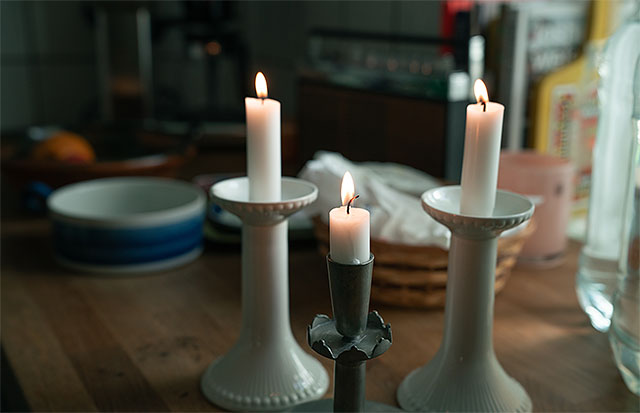Access to heat during a crisis
Your homes indoor temperature will drop quickly if the electricity cuts out during winter. Living in a home without heating is stressful, but there are many things you can do to make the situation easier.

Sealing floors, doors, and windows
Floors are the first things to get cold. Add extra rugs or blankets. Seal window and door gaps with tape, blankets or plastic to conserve heat. But don't forget that evacuation must be safe.
Gather in one room, drape blankets over the windows, and cover the floor with rugs.
Get out your winter clothes
Prepare like you would for a cold winter day. Use a sleeping mat, ski clothes, hat, and mittens. Dress in layers. This will allow air to circulate between the garments and be warmed by your body heat. Wool garments provide good warmth and should be closest to the body. It’s easier to keep warm if several people are in the same room. Build a hut to sleep in – for example, under a table covered with blankets. Put on warm jumpers, socks, and hats and crawl into your own sleeping bag.
Alternative heating
A working wood-burning stove, fireplace, or tiled stove are very helpful. Other examples of heat sources include kerosene or gas stoves. Follow all safety instructions when using this equipment. For example, there are rules regarding:
- Placement.
- Distance.
- Ventilation.
Candles and tealights provide both light and some warmth. But beware of the fire hazard. Use candlesticks or place candles in a bowl of water. Always place tea lights sparsely! Don't forget to have extra matches or fire-starters.
Remember!
It’s very important to ventilate regularly to let oxygen in!
Avoid frozen water pipes
In the event of a power cut, water may freeze in pipes and lines. This can lead to water damage. To prevent water from freezing, pipes should be properly insulated. If you suspect that an ice plug has formed in your pipes, do not attempt to defrost it with an open flame. It can be highly flammable. Instead, turn off the water and contact a plumber and your insurance company.
Think safety!
When routine life is disrupted, it's easy to neglect safety habits. Here are some safety tips for power cuts:
- Fire safely by following the instructions for the permanent or temporary heating device.
- Make sure there is adequate ventilation.
- Do not use a stove or candles when sleeping.
- Be careful when handling fuel and open flames indoors.
- Place candles far away from combustible materials, such as curtains.
- Place tea lights sparsely and in a candlestick that cannot catch fire.
- Place and use a stove or camping stove in a safe place, far enough away from, for example, cupboards and cooker hoods. Preferably outdoors.
Checklist: Warmth during a crisis
- Warm, all-weather outdoor clothing.
- Clothes made of wool.
- Thick socks, beanies, gloves, and scarves.
- Blankets, sleeping mats, and sleeping bags.
- Candles, tea lights, and fuel for heat sources.
- Matches and fire-starters.
- Alternative heat sources that don’t require electricity – for example, a gas or paraffin heater.
- Fire extinguisher.
Checklist: Preparedness on a tight budget
- Buy blankets and sleeping bags second-hand.
- Sleep in the same room.
- Stay in a small space.
- Gather in local association and community centres.
